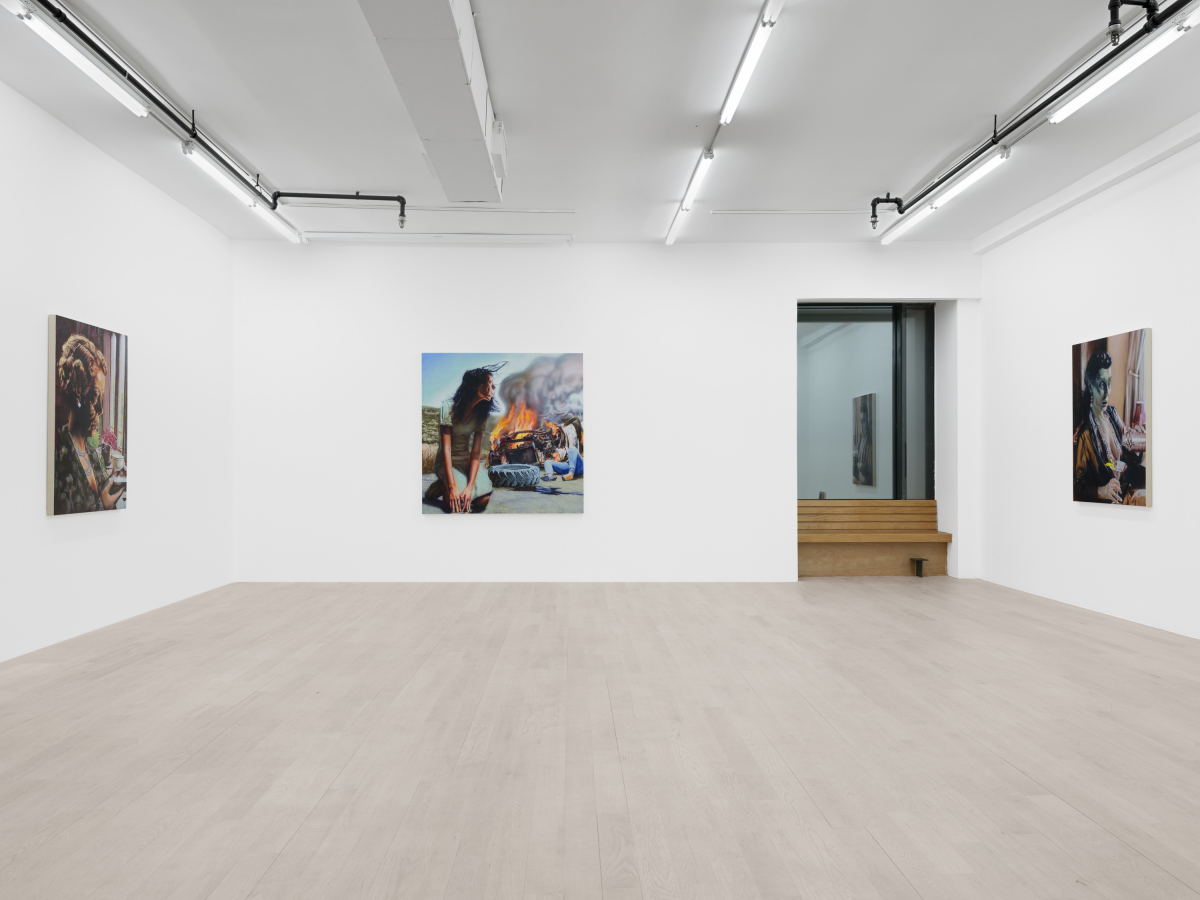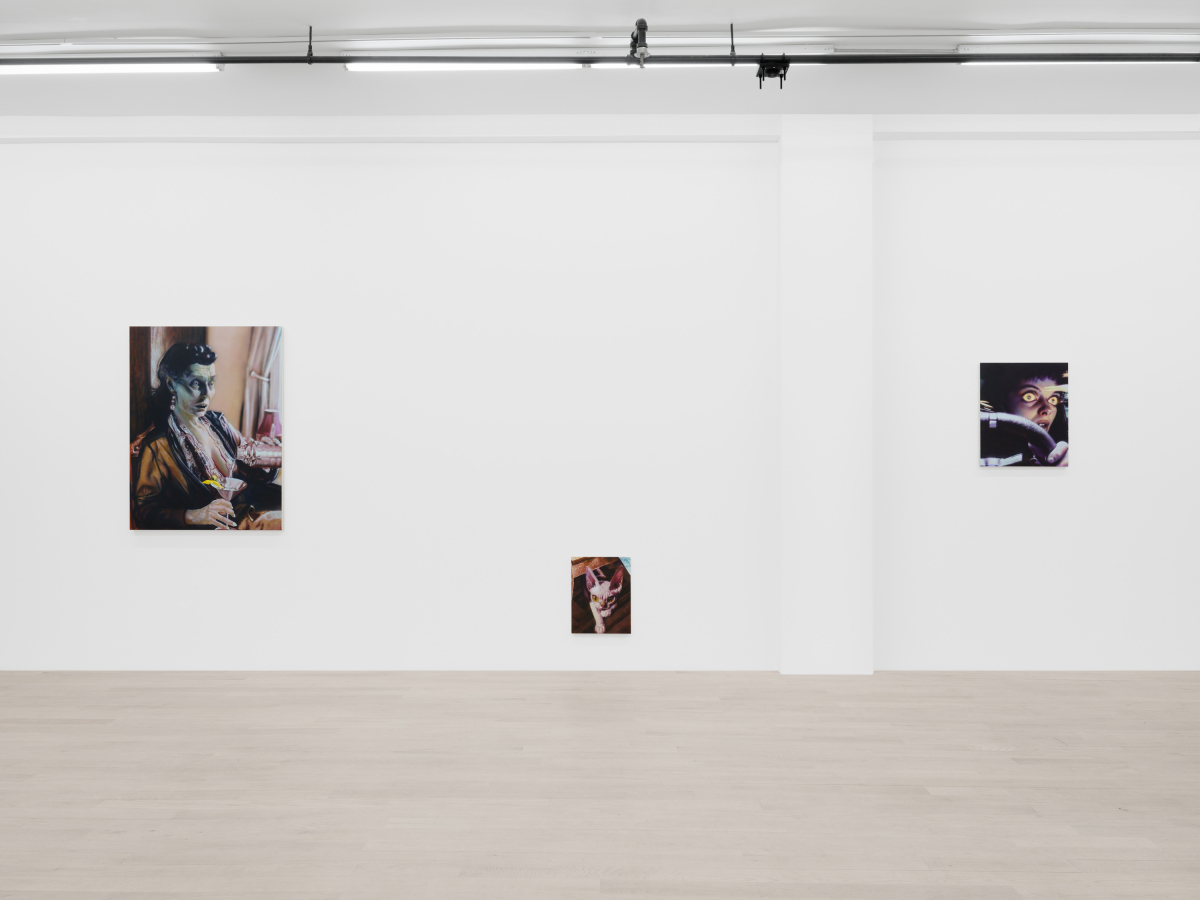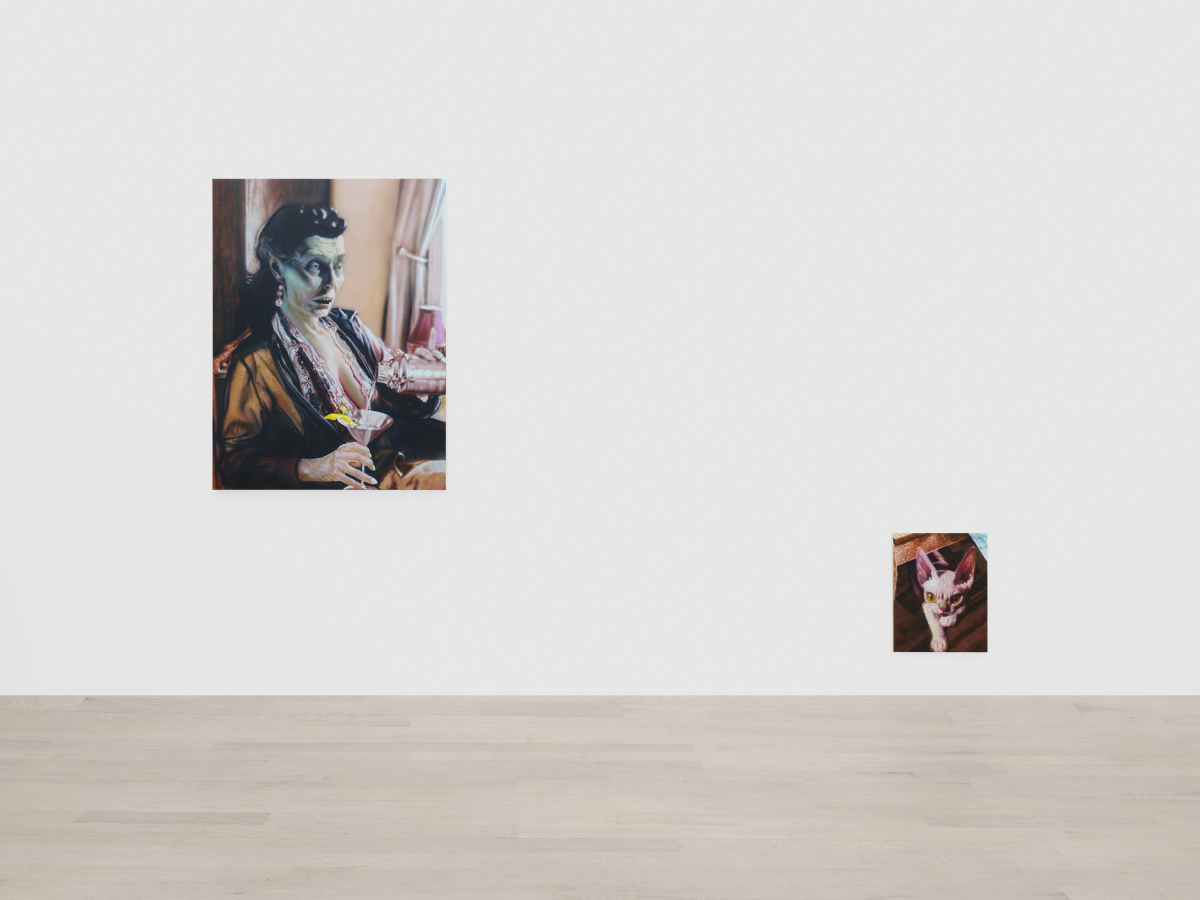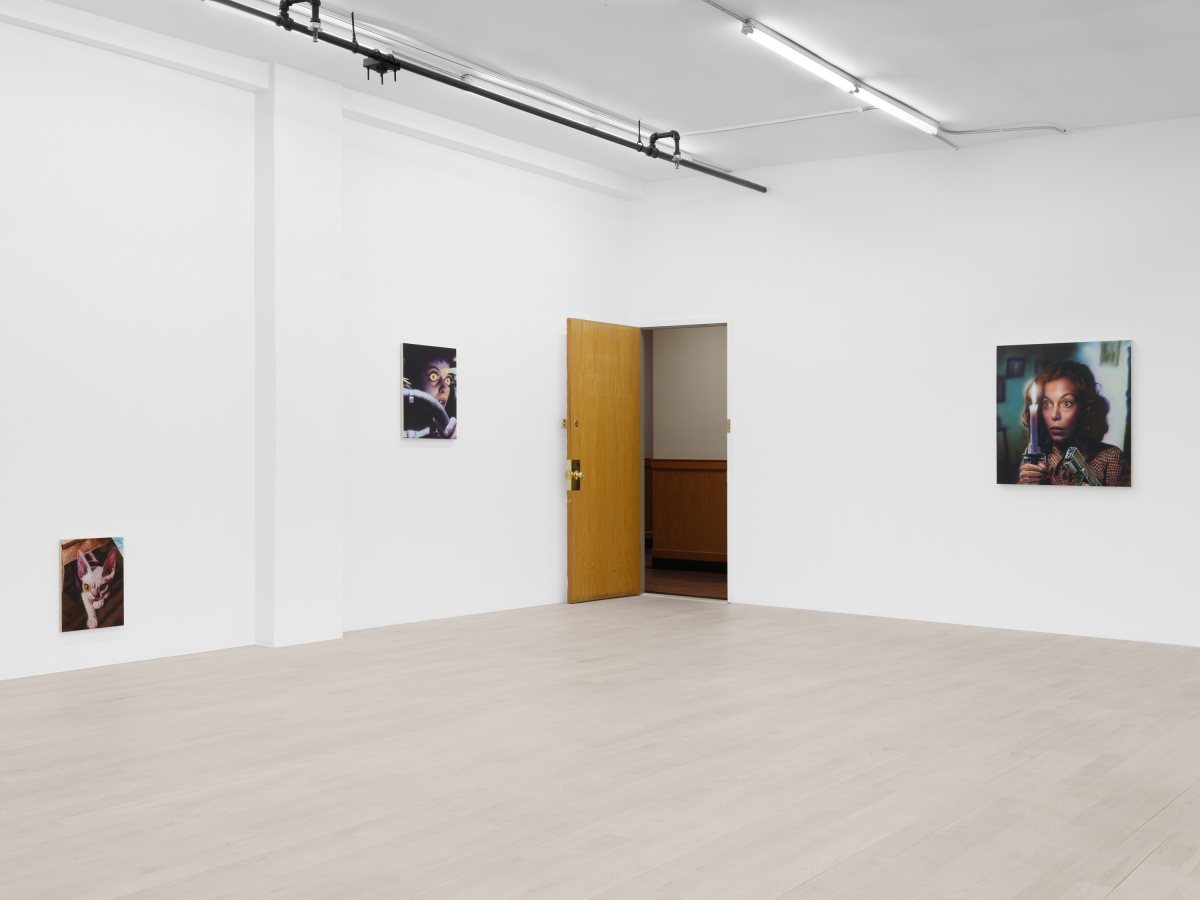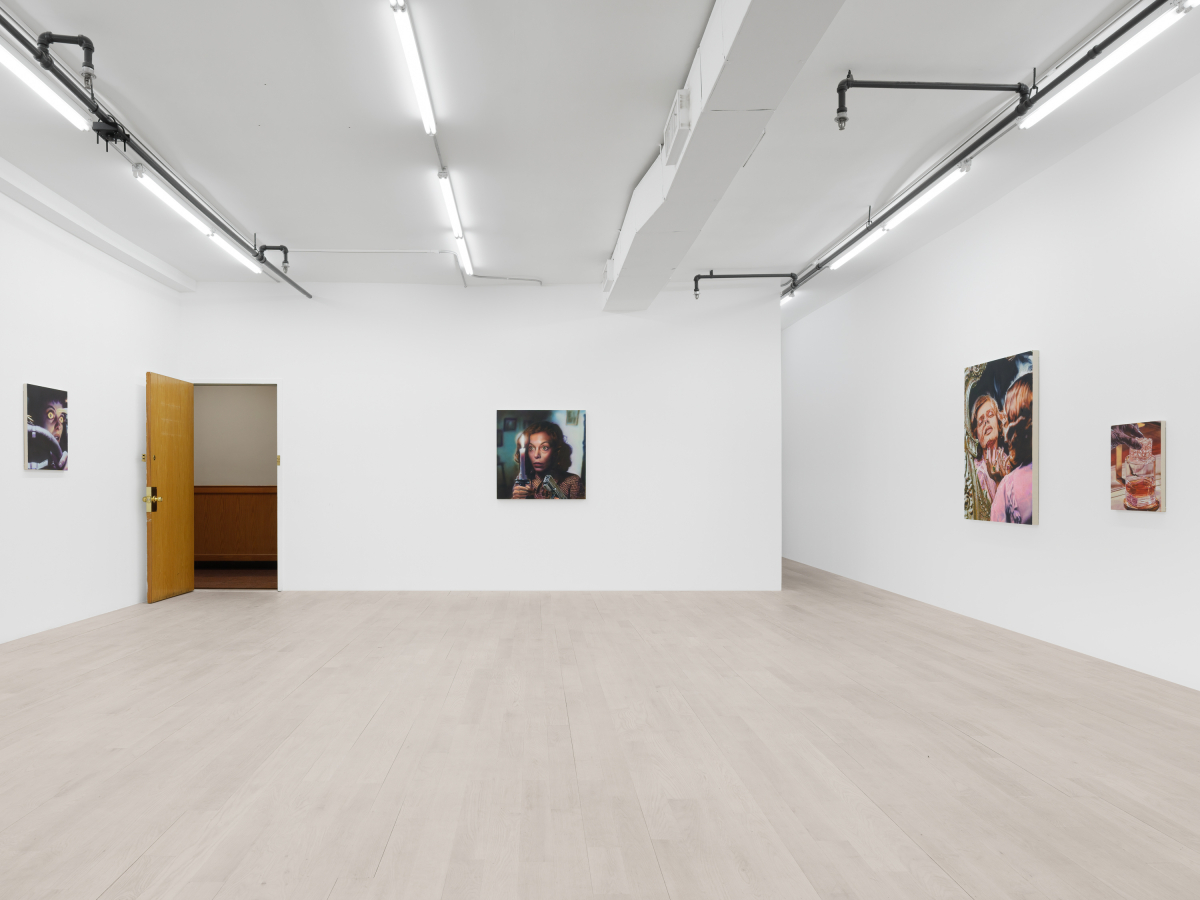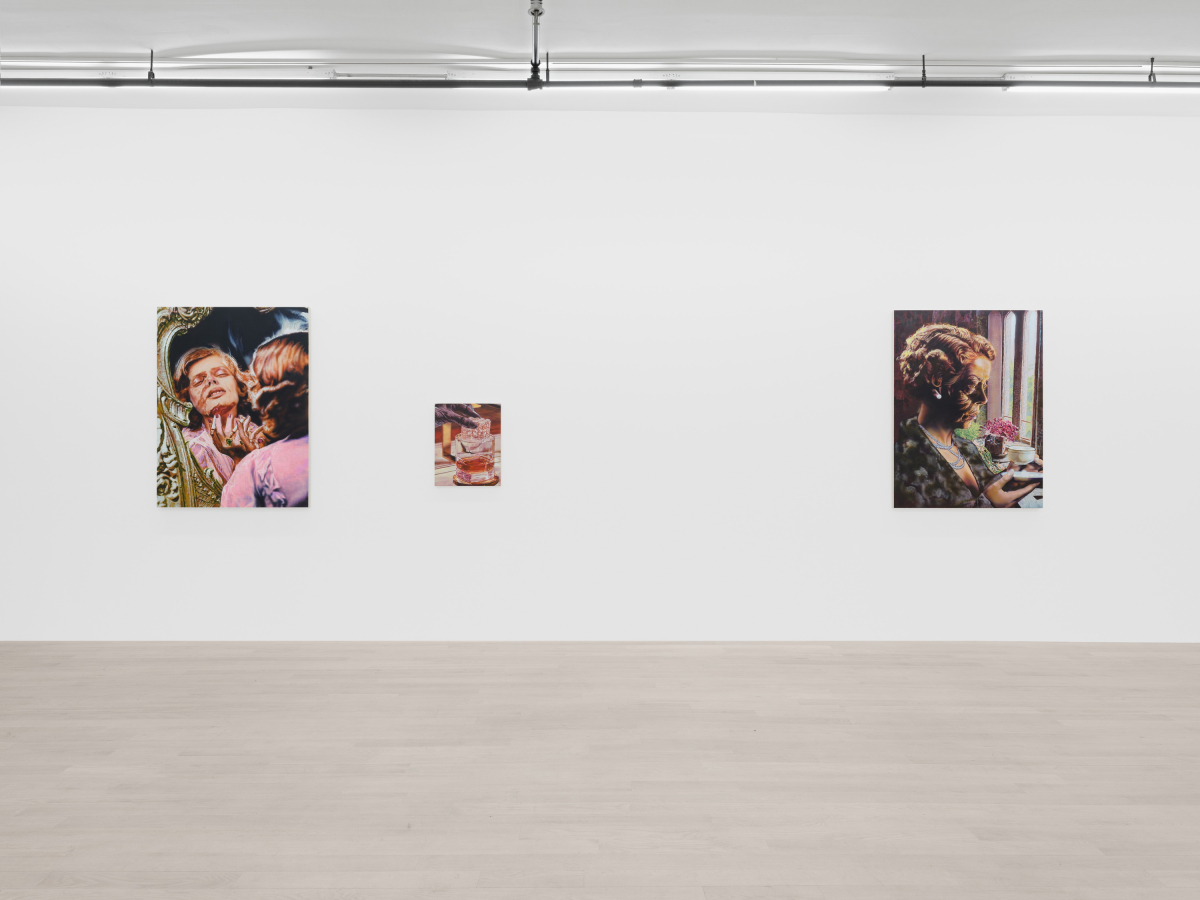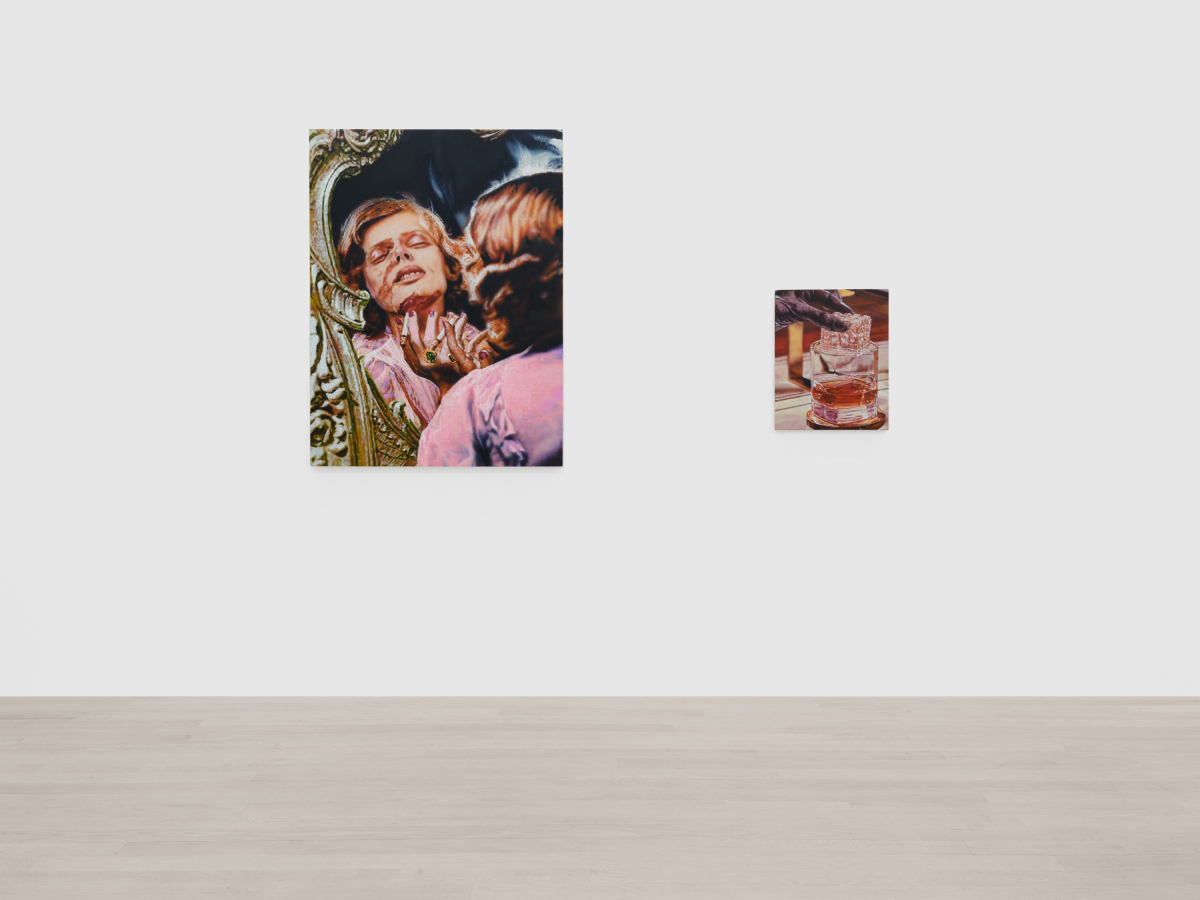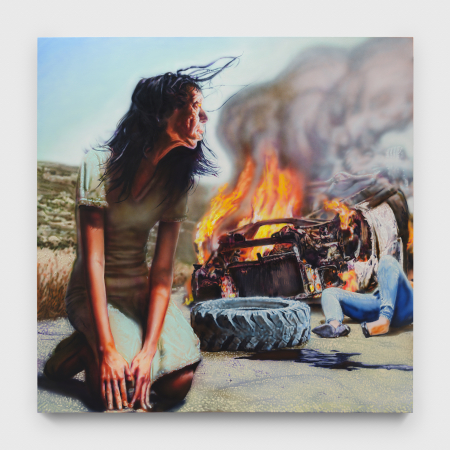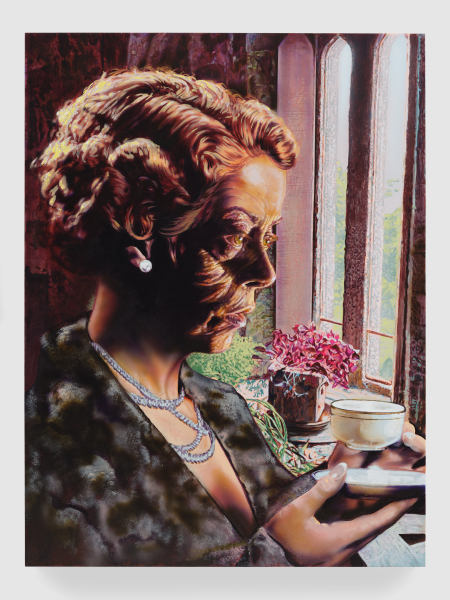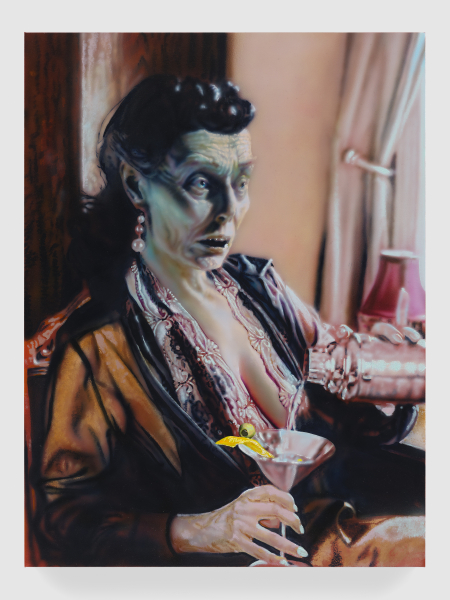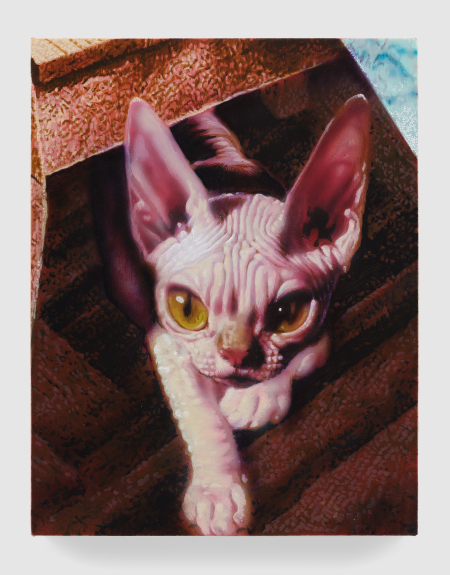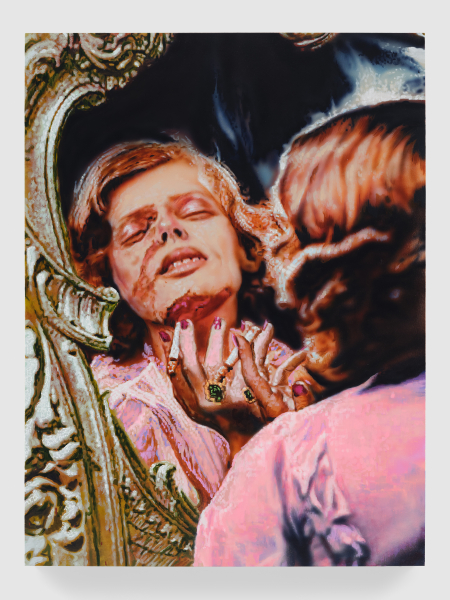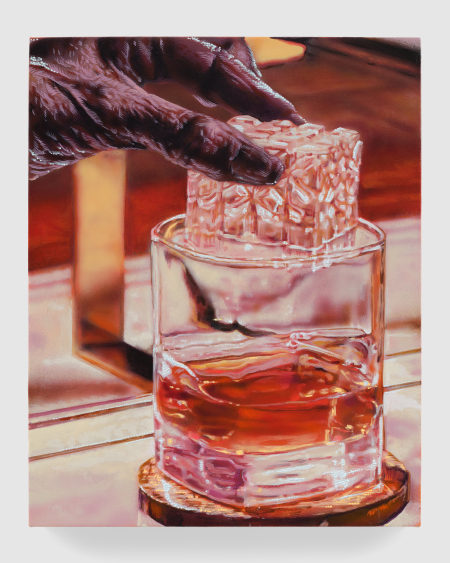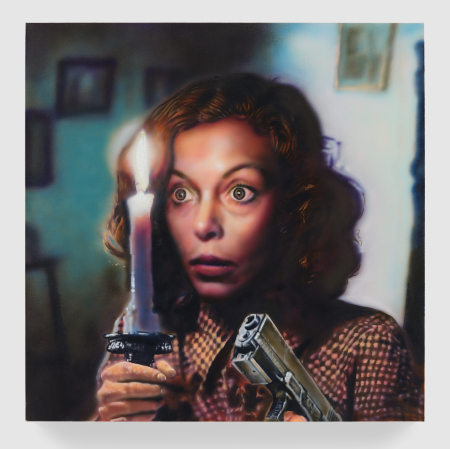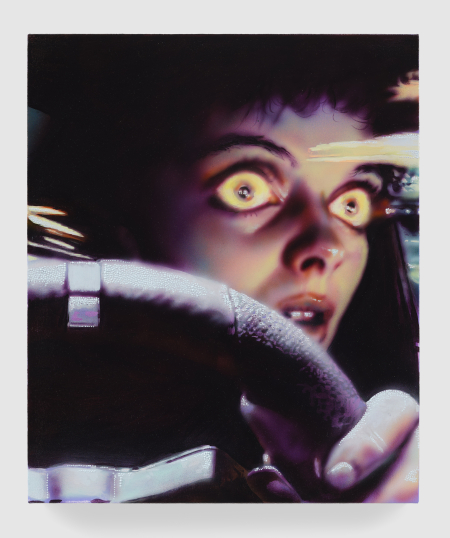Menu
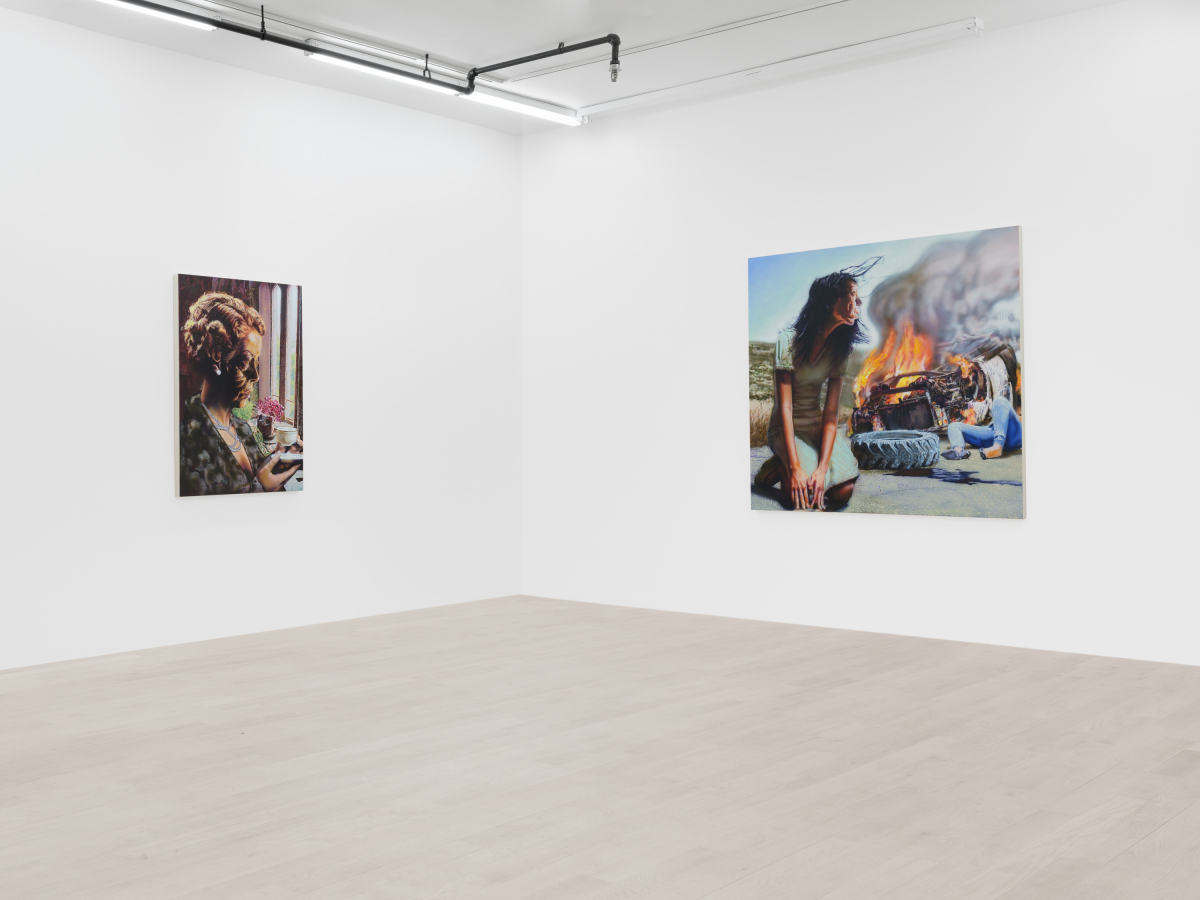
Last Caress, Installation View
Management is pleased to present Last Caress, Tim Brawner’s second solo exhibition with the gallery. In Last Caress, Brawner investigates the psychological expressions of America's excess and decline, using painting to explore the resentments and paranoia within class and generational divides. An essay by Andrew Woolbright accompanies the exhibition.
———
Pearl, Pustule, Pixel: The Work of Tim Brawner by Andrew Woolbright.
Pearl:
Is there any distance left between glamour and rot?
They fulfill each other, possessing each other as they realize their own extent. They are more chambered with each other than they are antipodal. It is similar to how painting adopts the position of the image, how it swells and distends from the image strand. As a painting inclines towards the image, it starts to buckle under its own desire. It feels its vertigo. The projector spills out Rorschach forms of meaning through each caressed detail. It feels that all that it has left is all the glimmering surface, endless surface, sprawling outward without armature beneath it. It is left with nothing but its intent––the intent to make a painting perfect along its surface. Nacre, the word we use to describe the opalescent shimmer of a pearl’s surface, is rumored to come from the Arabic word nakara, which means “to hollow out.” From its beginning, the more a surface glimmers the more it rots the thing within.
Kitsch was originally a term that was exclusive to painting. The brush searches for ersatz, escutcheon, and ornament. Mark models form to reveal and revel in detail. Faceted and over-faceted. overtness becomes an odor. It excises and exceeds what is beneath.
Pustule:
Skin goes slack as it loses its collagen. The American Rococo feels chintzy—swollen and ready to burst like a Venture Capital bustout. Amongst all the gossamer-fine tulle and the reflections of the crystal decanters, a Luxor mummy is painted sensitively, like a fragile Shelley Duvall. While it reeks of being buried with all that has been amassed, it's also tinged with the desperate pity of grey gardens and sunset boulevards. The morgue is all Little Edys and Norma Desmonds strung out and holding on, shivering next to a flipped Beemer.
They remember when they were young and beautiful, but in their memories they are also kept up by the lurking intruders in the hedges. They go to the window, carrying a candle and a glock. Being the head of the HOA makes enemies, after all. In their triazolam dreams they are young and beautiful and everything is a period piece. Except for the glock, which unravels the time of the whole thing. Their eyes are inert, over-vivid, maybe suspicious that something is unsettled about time. They move in the dark surrounded by all of their aggressive affectations and their phenobarbital. Their fear is that the mirror will reveal them to be crypt-keepers, buried with all of their real estate and excess. They feel the slithering, living dead of vanity; their vainglorious attempts to maintain their sloughed and tan skin, cut crystal, and formaldehyde.
Fixation isn’t agential, it's libidinal. Consider the undescended cryptorchid as a metonym of wild and unrealized desire. Undescended, it’s the bulging threat of hoarded assets. It is the unique pressure of an unrealized wish. Painters often indulge in the things that are wrong for them to like. That’s what makes the period piece not sit right. Pickman’s model is Liveleaks and boards.
Pixel:
A pixel is both a pustule and a pearl. We are left to interpret what is the priority. What is in focus? When the pupils become static and crystalline, the rest of the painting jitters out of focus. It traps the same anxiety of movement that a generated image has. It is manically unsure of itself the further it gets away from the prompt, writhing as it is forced to develop without text. Soft edges are nervous ones.
There’s something that happens with painting when it follows so closely to its original intent. It becomes a production. The painter becomes the director, and then an actor when they have the script. As they carry out the image, they reveal the texture maps that don’t have the rigging underneath them. Heidegger’s worst fear of culture was how technology was stripping it of meaning to be a lebensattrappe––a life dummy. In taxidermy, the model that you use to wrap a hide around is called a blank. There are blanks of foxes, crows, and wolves. Are mummies blanks? What is the hide and what is the blank that Brawner is referring to here? The replacement of life with cheap and dummy objects is interdigitally linked. These are dummy mummies sheared of skin. Brawner is convulsing each painting into pixel, shifting them into impoverished and undead images enthralled with carnal pulls.
———
Tim Brawner (b. 1991 in Omaha, NE; Based in New York) received an MFA from Yale School of Art in 2020. Solo exhibitions include Feels Like Heaven at von ammon co., Washington D.C.; Glad Tidings at Management, New York; Sometime Come the Mother, Sometime the Wolf at Union Pacific, London. Group exhibitions include Maskenfreiheit, Margot Samel, New York, NY; Focus Group 4, von ammon co, Washington, DC; OMGWTF, Primary Projects, Miami, FL; Companions, Union Pacific, London; Yale Painting & Printmaking MFA, Galerie Perrotin, New York, NY. Brawner’s exhibitions have been reviewed in The Washington Post, Artforum, and The Brooklyn Rail.
